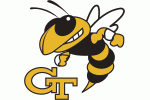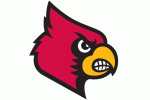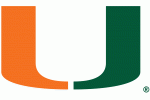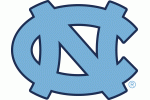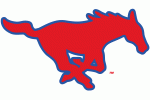There’s something electric about college football Saturdays. The packed stadiums. The alma mater chants. The rivalries that date back generations. But for a growing number of fans, the real thrill kicks in before the game even starts—when the betting lines go live.
/cdn.vox-cdn.com/uploads/chorus_image/image/60127907/498214920.jpg.0.jpg)
College football is unpredictable by nature, and that’s exactly what makes it such an appealing challenge for sports bettors. The scores can swing fast, underdogs often have more bite than expected, and the emotional stakes are sky-high for players and fans alike.
It’s no surprise, then, that platforms like sawan365 are seeing more action from college football bettors who want in on the chaos and excitement. But to make smart picks, it helps to understand what makes betting on NCAA football different from betting on the pros.
Understanding the Basics: Point Spreads and Totals
Let’s start simple: the point spread. In college football, the spread isn’t just about predicting who wins—it’s about how much they win or lose by. A favorite might be listed as -14.5, which means they need to win by 15 or more for you to cover your bet. If you take the underdog at +14.5, they can lose by 14 or less—or win outright—and you’ll still get paid.
Then there’s the over/under, also called the total. This is the combined number of points both teams are expected to score. You’re betting whether the final score goes over or under that number.
So far, so good. But here’s where college ball gets interesting.
College Football Isn’t the NFL (And That Matters)
The NFL is tightly regulated. Talent is (relatively) balanced. Coaching staffs are deep. But college football? It’s a completely different beast.
One team might have a five-star quarterback and a full coaching staff, while their opponent is still using outdated schemes and has walk-ons in key roles. That kind of talent gap can create blowouts you don’t usually see on Sundays. It also means that betting lines can swing dramatically based on insider info—like a sudden coaching change or an injured offensive lineman at a small program.
This imbalance is one reason college point spreads can get pretty wide. You’ll regularly see lines of 20, 30, or even 40+ points—something you’d almost never find in the NFL.
The Home Field Advantage Hits Different in College
Another wrinkle? Home-field advantage means more in college. Some teams are nearly unbeatable at home thanks to student sections that scream for four quarters straight. Think of Death Valley (LSU), Autzen Stadium (Oregon), or the Horseshoe (Ohio State).
Unlike the NFL, where players are used to hostile environments, college kids are more prone to mental errors when rattled. So, when you see a small-school underdog playing at home in front of 50,000 fired-up fans, don’t discount the emotional edge. It often shows up in the final score.
Watch the Line: Movement Tells a Story
Let’s talk about line movement—one of the sharpest tools in a college football bettor’s kit.
Lines don’t stay still. Sportsbooks adjust them based on betting volume, news updates, and sharp (a.k.a. pro) money. If a line opens with Georgia as a -17 favorite but drops to -14 by Friday, that’s a sign that either public money is heavy on the underdog or insiders know something you don’t—like a QB tweak or weather concerns.
If you’re serious about betting college games, it’s worth checking where the line opened and where it’s trending. That info can clue you in on market sentiment before you lock in your bet.
Trap Games: The Silent Bankroll Killer
College teams are full of emotion. Sometimes, they overlook weaker opponents because they’re looking ahead to a big rivalry game next week. These are called trap games, and they’re where upsets (and bankroll burns) happen.
Let’s say Alabama is scheduled to play Tennessee next week but has a seemingly “easy” matchup against Vanderbilt first. Don’t assume they’ll cover a 30-point spread if they’re already mentally preparing for their big showdown.
Trap games are a bettor’s nightmare and a handicapper’s playground. Spotting them takes awareness of each team’s schedule and their historical letdown tendencies.
Don’t Ignore Coaching Tendencies
Some coaches run up the score. Others ease off the gas once they’ve secured a lead.
This matters—a lot—if you’re betting spreads or totals. For example, teams like Ohio State and Oklahoma under past coaching regimes were notorious for blowing out opponents well into the fourth quarter. That kind of aggression can push totals higher and ensure favorites cover, even in games that are already decided.
On the flip side, a coach who’s known for playing it safe once he’s up by 10 might not cover even as a heavy favorite. Reviewing past game tapes, post-game interviews, or just digging into a coach’s track record against the spread can give you a better read on how they approach scoring margins.
Weather Warnings and Altitude Alerts
It’s easy to overlook weather—but in college football, it can totally reshape a game.
Heavy rain can neutralize passing-heavy offenses. Strong winds can throw off kickers and quarterbacks. Snow? Good luck getting your over to hit when both teams are sliding around like they’re on ice.
Same goes for altitude. When sea-level teams head into high-altitude stadiums like Wyoming or Colorado State, fatigue becomes a factor by the second half. That can influence scoring, tempo, and stamina—all of which affect betting lines.
Check weather and geography as part of your pregame routine. It can be the difference between a win and a waste.
Conference Play vs. Non-Conference Games
Another pro tip? Pay attention to whether it’s a conference game or not.
Conference games tend to be tighter. Teams know each other well. Coaches prepare for these matchups all year. That often leads to more defensive showdowns and closer outcomes—great for underdog bettors or under totals.
Non-conference games, especially early in the season, are when top programs pad their schedules with easy wins. That’s when you’ll see the 40-point spreads and explosive offensive numbers. Adjust your betting strategy accordingly.
Emotional Angles and Public Hype
Emotion is everything in college sports. A team might rally after a tragedy or come out flat after a coaching controversy. These intangibles won’t show up in stats or analytics but can completely sway a game.
And then there’s the public hype factor. Some teams are bet heavily just because they’re popular—think Notre Dame, Texas, Michigan. But popularity doesn’t equal performance. If everyone’s piling on the favorite, but the line isn’t moving, ask yourself why. Oddsmakers love when the public bets emotionally.
Live Betting Adds a New Layer
If you’re confident in your read on a team but unsure about the pregame spread, live betting might be your move. Once the game starts, you can see how both teams look in real time before placing a wager.
Let’s say a big favorite goes down by a touchdown early but is clearly moving the ball well. You might get a better number live than you would’ve pregame. On the flip side, if a key player gets hurt early, you’ll be glad you waited.
Just be sure you’ve got a reliable platform and a strong connection—lines can shift within seconds.







